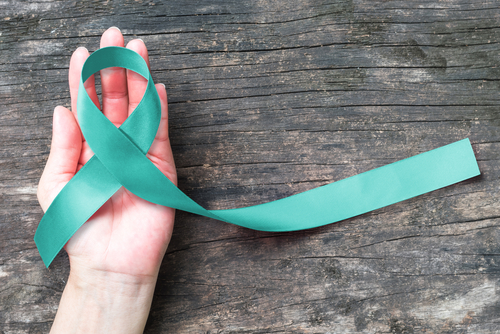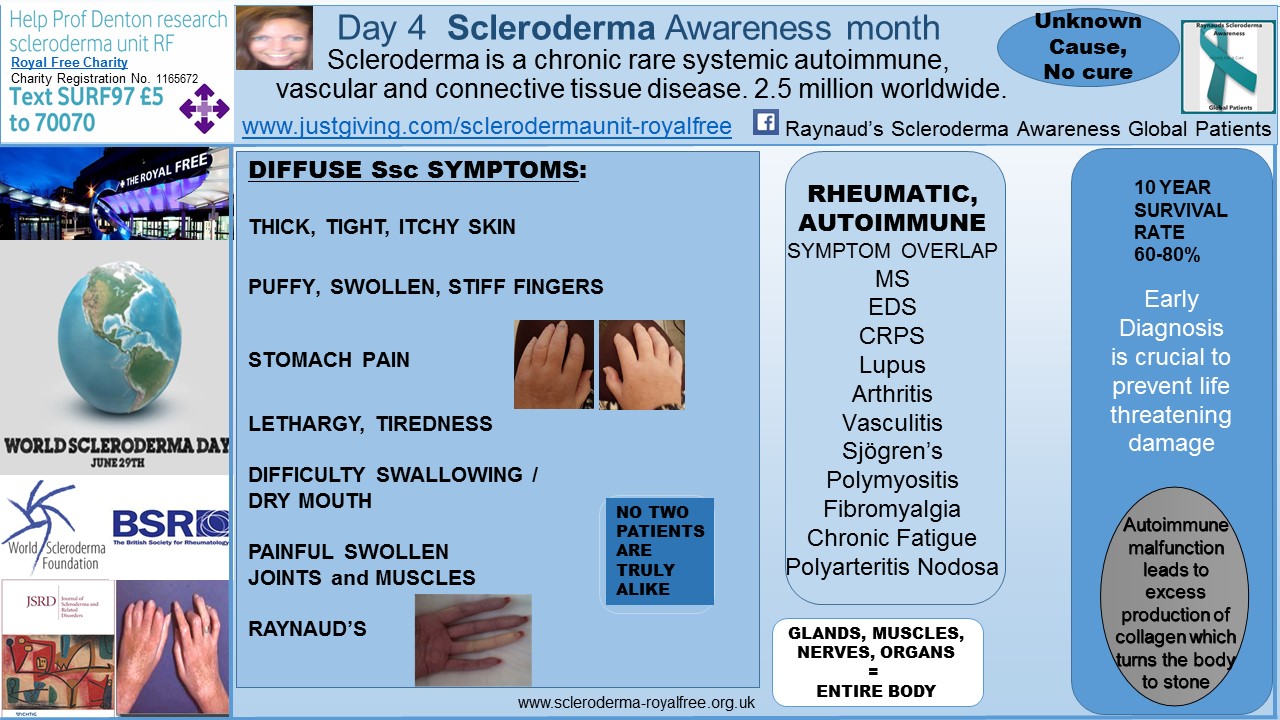Day 4 SCLERODERMA Awareness Month

The symptoms of Scleroderma can differ from patient to patient, with no two patients displaying the exact same set of symptoms. This makes diagnosis and treatment more challenging to meet the needs of the individual patient.
In all types of scleroderma (see Day 1 of Scleroderma Awareness Month for the different types), the skin is affected. In the diffuse form, all parts of the body can be affected, including soft tissue, organs and other complications as a result.
Stiff, puffy fingers along with thick, tight itchy skin, difficulty in swallowing, stomach cramps and pain, with swollen joints and immense tiredness, are the typical symptom hallmarks of the diffuse scleroderma patient.
Early diagnosis is crucial to prevent potential life threatening damage. Treatments are targetted at symptom suppression only, with a cure still to be discovered. Organ transplant is a final option, if the patient fits the relevant criteria, including being strong enough to withstand the procedure.
I have lived with diffuse Scleroderma for 19 years, since 1997. Although, it is likely that I presented with some of the symptoms some time before diagnosis, I just put them down to being a normal 24 year old loving life, with a busy social life and professional career.
However, my hands turned stiff and non functional, similar to arthritic symptoms, prompting me to seek medical intervention.
Diffuse scleroderma can be extremely aggressive in its progression, attacking the body’s organs and causing irreversible damage. Chemotherapy and immunosuppressive agents help at suppressing the symptoms with organ transplant and stem cell transplant being the final treatment / management options, see above. Early diagnosis is crucial to attempt to prevent lasting potentially life threatening damage. And, even then, not everyone will respond to the pharmaceutical treatments which are currently available.
I see myself as being an extremely lucky diffuse scleroderma patient. Lucky in that I have minimal internal organ damage, and I am still around to shout all about what scleroderma can do. My full time job is managing my symptoms, which on some days is easier than others.
I am eternally grateful for the medical expertise and care from Prof. Dame Black and Prof. Christopher Denton, who quite literally saved my life. My diagnosing Doctor had given me a prognosis of 15 months in September 1997. In December 1998, I had my first consultation with Prof Dame Black and then Prof Denton, who I ‘knew’ would help me get better.
I spent the first seven years taking chemotherapy / immunosuppressants. I am now 12 years free from this regime. I have reduced the 24 tablets a day, back in my hey day, to just 2 tablets a day. I take Bosentan for my Raynaud’s, and digital ulcers. My hands are the best that they have been since before diagnosis, having taken Bosentan continuous for three years plus now, and very importantly to me- ulcer free!
I have a strict daily routine for managing and respecting my diffuse symptoms, including a strict diet which includes daily fresh juices made by me, in my pharmacy, which is my kitchen!
I am a living example that this diagnosis can be managed on a long term basis, and for this, I know, I am truly blessed, even if, I am now a scleroderma parrot.







